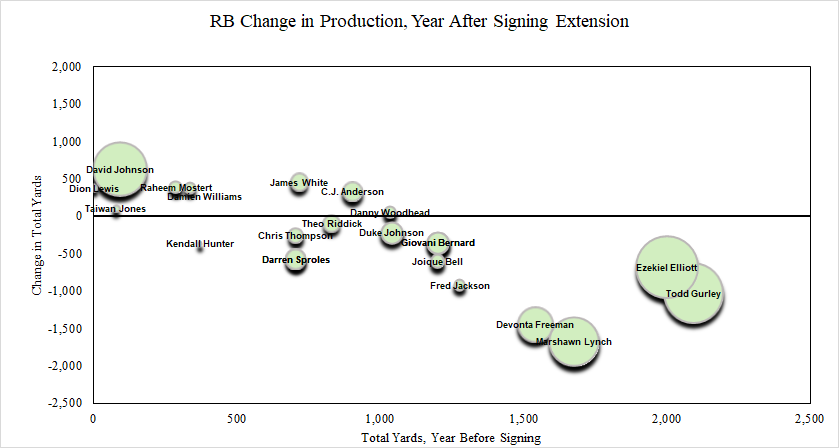Cowboys owner Jerry Jones was discussing wide receiver Amari Cooper’s performance for the Cowboys and made some interesting comments where the takeaway seem to be the following
Jerry Jones is frustrated with Amari Cooper's contract and relative production.
— Clarence Hill Jr (@clarencehilljr) January 21, 2022
The Cooper and Cowboys dynamic is one that I have always found interesting. Dallas traded a number 1 pick for Cooper back in 2018 but never seemed to feel the same push to protect their investment in him that other teams who traded for players (Jalen Ramsey and the Rams, Leonard Williams and the Giants, etc…) did. Dallas actually allowed Cooper to test free agency in 2020 rather than signing him to an extension after the season ended.
Eventually the two sides came to an agreement where Cooper hit the magic $20 million per year number that had been pretty elusive for most receivers and put Cooper in a rare group of players but he contract itself said something different. Usually when players sign contracts this large they get a massive amount of money up front. For example recent contracts in the $20 million per year range usually see a player earn between $28 and $32 million in the first year. Cooper received $20 million. Cooper only received a $10 million signing bonus which ranks 15th at the position.
The more interesting aspect for Cooper’s contract came with the guarantee structure. Dallas guaranteed the first two years of the contract at signing. They added another $20 million in injury protection in the third year of the contract but unlike other contracts with very favorable vesting conditions Cooper’s guarantee’s don’t become fully guaranteed until the 5th day of the league year in 2022, which is the third year of the contract.
This was not typical for the way the Cowboys have treated their star acquisitions. DeMarcus Lawrence, who also signed a $20 million per year contract and did so a year before Cooper, received $48 million in guarantees at signing and another $17 million that was injury protected. That $17 million, like Cooper’s, was due in the third year. Unlike Cooper’s the $17 million became guaranteed in the second contract year rather than the third.
Ezekiel Elliott, who also signed a lucrative contract in 2019, was treated similar to Lawrence. Though the situations are not entirely comparable since Elliott had two years remaining under contract, Elliott received about $15 million in new full guarantees at signing. He had another $22 million in injury protection in years 3 and 4 of the contract. Those salaries were guaranteed in year 2 and year 3 making him impossible to cut. Zack Martin’s contract also followed a similar pattern.
Essentially Cooper was treated in this respect more like the second tier star players who had signed in recent years. Players like Jaylon Smith and La’el Collins had the less favorable vesting schedules in their contracts. Now this is sometimes a common tradeoff we see in contract negotiations. Cooper reaching $20 million a year was likely a must reach target for him. Since few receivers before or since have gotten to that number it would make sense that Dallas would pull back on a favorable pay structure and guarantee structure especially if in the back of their minds they felt they were overpaying to keep him.
When Cooper was signed to the contract I noted at the time that it seemed to be a deal that had a bit of “buyers remorse” built into the contract. Cooper would be easily tradeable at any point in time since the signing bonus was so low and he could be cut in the third season with minimal penalty assuming he was not injured. If cut his salary he would have earned from Dallas would have trailed the two year earnings of lower annual value contracts signed by other star receivers.
One way Cooper would have had more security and assurances on his future is if the Cowboys would have restructured his contract for salary cap relief. Last season Cooper had a $22 million cap charge which could have been brought down to about $6.8 million had the Cowboys converted most of his salary to a signing bonus. He would have been a logical choice since he was coming of a 1,100 yard season but the Cowboys resisted. Instead the restructured the contracts of Elliott, Martin, Tyron Smith, La’el Collins and Dak Prescott. The prior year they had restructured Lawrence, Martin, Smith, and Collins rather than modifying the Cooper contract.
It just seems like this is a possibility that Dallas has always had in mind. Cooper has a $22 million salary cap charge and just $6 million in dead money if they were to cut him,(this assumes that he is healthy). While he is still productive Cooper is coming off a year where he failed to reach 900 yards and seemed to deal with nagging injuries all season. It’s probably enough of a decline with all of the other factors here that they would at least discuss options with his contract ranging from offering a pay cut to seeing what trade market might exist to just leaving it as is.
This is not the same situation as Dez Bryant as that name may be brought up when people think of Dallas’ options. Bryant’s numbers had fallen for a few years and he was older than Cooper when Dallas decided that they were paying number 1 money to a non number 1 player. Cooper may still be a 1, Dallas just has to decide if they want to spend the full $20 million to find that out in 2022.

